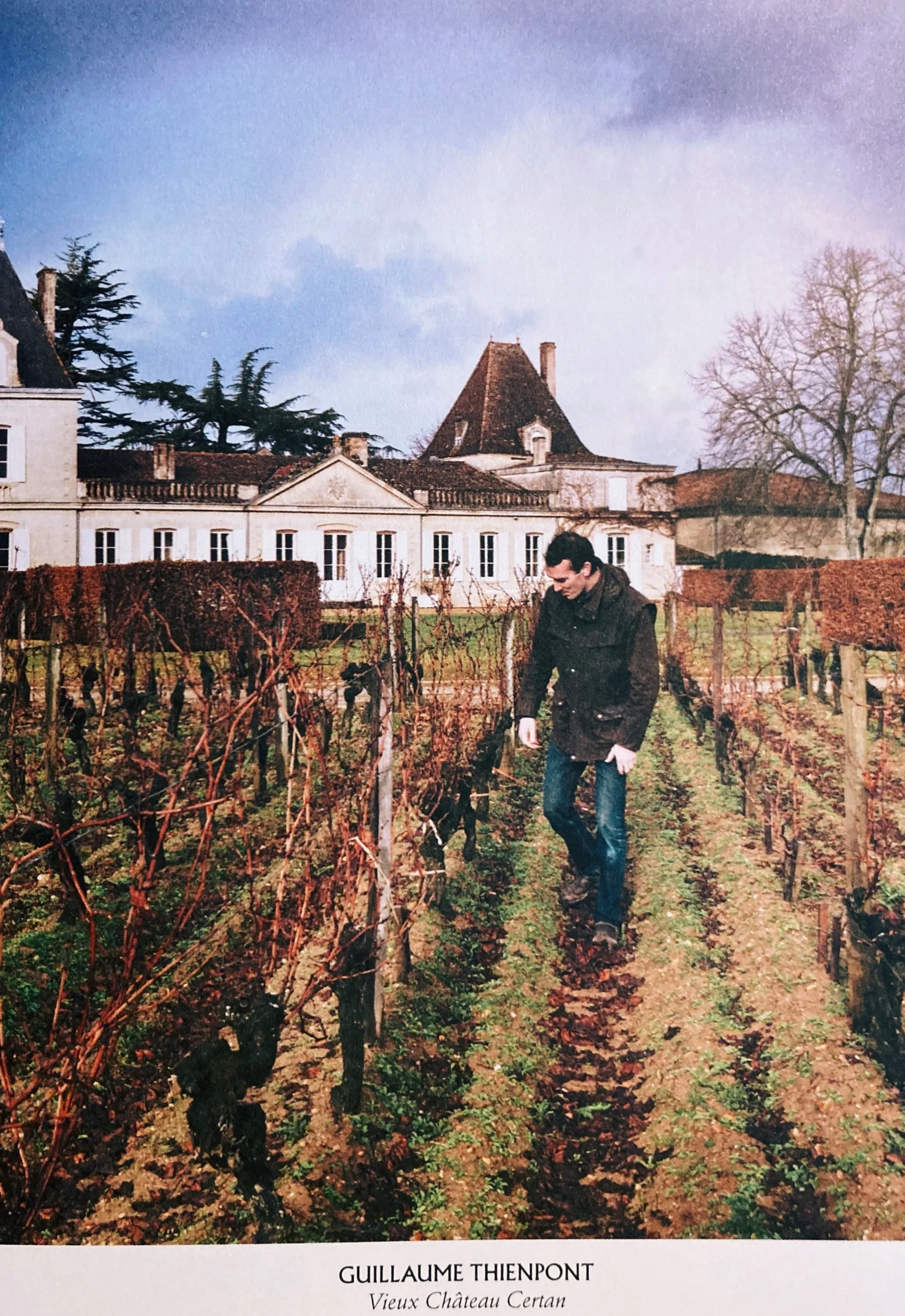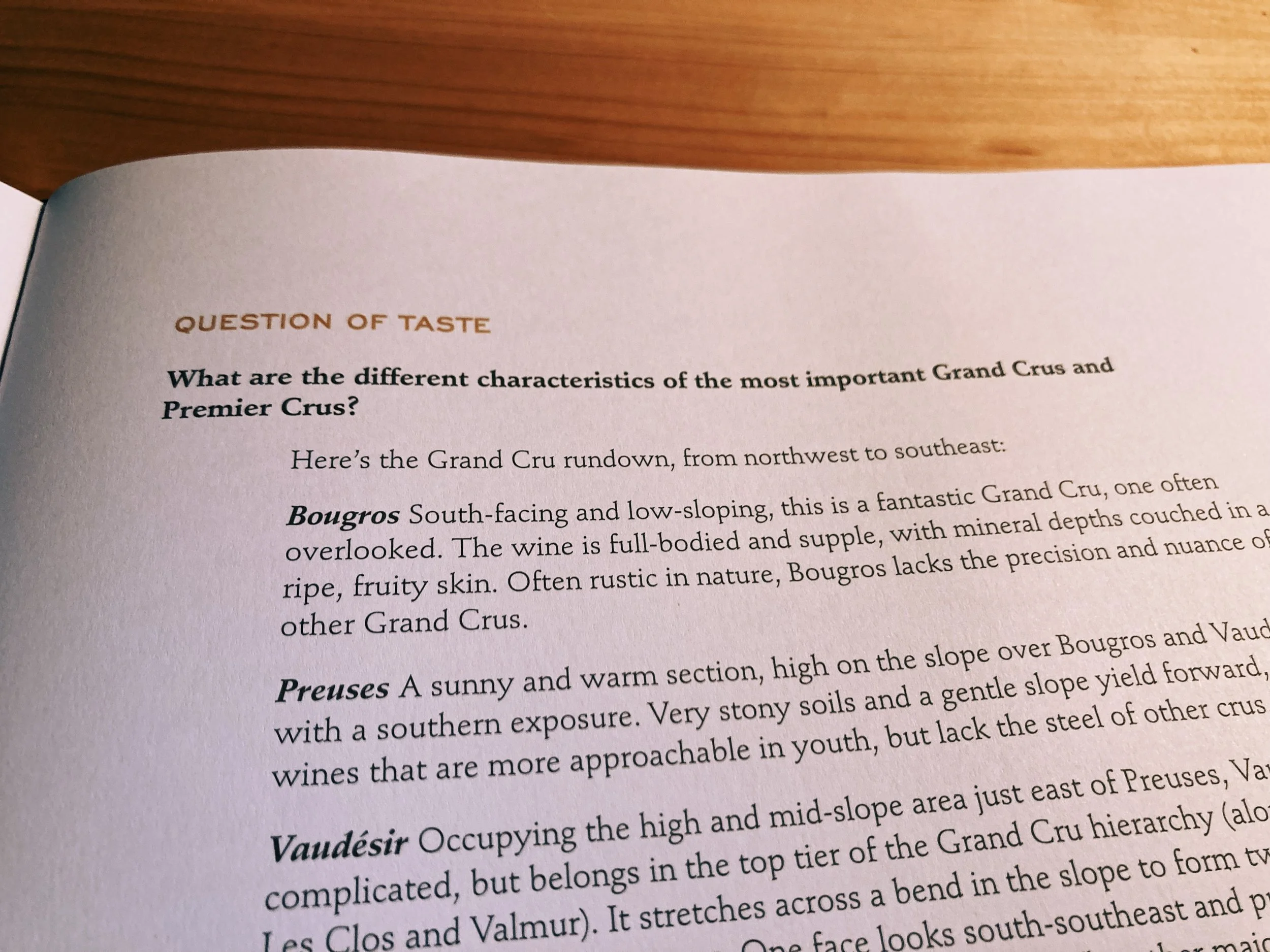The Sommelier’s Atlas of Taste - My Idol
“A field guide to the great wines of Europe” aka my absolute favourite wine book.
RAJAT PARR AND JORDAN MACKAY - 2018
What I Like About It
1. It is more like an entertaining travel book than a textbook about wine. It describes journeys, impressions about locals and landscapes, recommends hidden restaurant jams.
The ‘STOP, EAT’ sections depict restaurant milieus, feature ‘must-haves’ and wine lists. In the Jura chapter, the authors even took the effort to profile the Comté Cheese in great detail as (in their opinion), it is the greatest cheese to pair with wine in the world.
2. Paper quality, overall structure, and the haptics overall are terrific. Great proportion of photographs to provide a refreshing break for the brain, well-measured length of paragraphs. The ravishing photos (by Joe Woodhouse) that are bewitchingly capturing the mood. You are able to picture yourself next to Rajat and Jordan, getting a slight chill in the Burgundy vineyard at the winter pruning or marvel at the play of the Sicilian sun rays.
3. ‘Particulars of Place’ section - It grabs the essence of the terroir. These sections summarise appellations with such routine and deep understanding that automatically draws a clear red line about the core of that land. Essential soil characteristics, nuanced difference between sub-regions, little micro-climates clearly addressed. And to what it all counts: how does affect the vigneros’s decision in the vineyard and then the final character of the wine in your glass.
4. ‘Questions of Taste” section - Invaluable tips for tasting the difference! Whether you are one of those freaks who plays blind tastings with your friends instead of Monopoly, or just wants to learn more why your Alsace Rieslings always have lower acidity and riper flavours than those cousins from the Mosel.
5. ‘Rajat’s Top Producers’ section - I love how the reader get a personal impression about the people behind the labels. Rajat clearly understands that souls behind the wines as well as their deep connection to their land. He tries to link them somehow to their most recommended wines and spotlights key markers in their winemaking styles.
You’ll also find inspiring, atypical tasting notes that often personalise a wine or wine style. Like with Syrah from the Rhone:
“Syrah’s shrouded, savory aromas stir long-buries primal memories of feral origins: the glory of coming across a patch of sweet, juicy, ripe wild berries, the smell of running through a thicket of untamed, flowering herbs and stands of pine and cypress, the scent of blood, fur, and bone, the taste of flesh, and a whiff of smoke from the fire that cooked it.”
Everything you’ll have to know about a well-made Syrah.
6. The authors put regional developments in historic perspectives and thereby help finding your red line, your deeper understanding about the appellation. These evolutions and deep dives also highlight a region’s ability to change, its relations to its heritage.
As an example, I like how the book approaches the evolution in Champagne towards a “vinous” approach through the change is glassware. It is a brilliantly practical and universally understandable revolution on the Champagne scene.
7. Overall choice of terroirs being covered. This book covers the vast majority of Europe`s most historic and important appellations. This book doesn’t want to be know-it-all or cover every regions that you might miss from the table of contents. But it leaves you with a deep understanding about these revolutionary places without creating the ambiance of a boring wine bible.
I Don’t Like
This listing is obviously much shorter and more finicky than the aforementioned one. I am a huge advocate of detailed maps (possibly with terrains) when it comes to learning about terroir. This book is lacking
Who Is It For?
It is basically for everyone, who has the merest interest in wine and doesn’t even know about the slightest thing about the topic yet. But please don’t mistake this book for another entry-level “oh my first wine book I bought for WSET L1” all-rounder type of book. This one doesn’t try to describe the variety Chardonnay for the 38th time or define the proper serving temperature of a medium-bodied red wine. On the contrary, it will enthral you and brings the wine bug right to your veins to bite you forever.
On the other hand, it doesn’t mean that a seasoned wine lover can not be inspired by its down-to-earth approach, bottle tips or producer line-up. As a sommelier, you might even steal some of those catchy fables about the terroir where your next recommended bottle at ‘Table 3’ come from.
It merges the element very closely with the final product. I always have the feeling that outstanding vignerons try to translate their sense of place and heritage via wine with their own personal signature in winemaking. It feels like to me, that the writers have a strikingly similar understanding as they’ve created the perfect structure for that. Honest impressions about the resonance of the place.
“So this book takes its direction from the way Raj constructs his life - essentially a nonscientific, yet vigorous and impassioned road-tripping inquiry into how wine tastes and why.” - Quote from the ‘Introduction’ chapter
Get your copy of the Sommelier’s Atlas of Wine and help supporting the blog.







